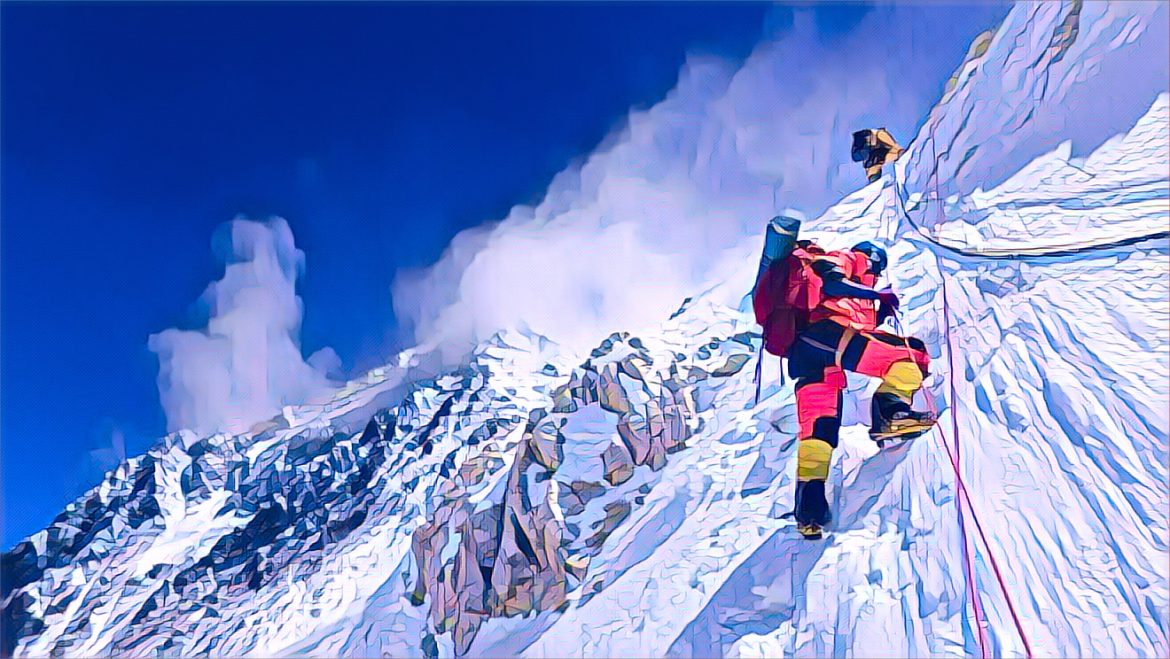At least four climbers have died on Mount Everest this season, with search parties still looking for three others who went missing, according to tourism officials in Nepal.
The latest fatalities involve a Kenyan climber, Joshua Cheruiyot Kirui, 40, and his Nepali guide, Nawang Sherpa, 44. The pair went missing near the summit on Wednesday and were later found deceased.
“The team found the Kenyan climber dead between the summit and the Hillary Step, but his guide is still missing,” Khim Lal Gautam, chief of the tourism department’s field office at the base camp, told AFP.
Another Nepali climber, Binod Babu Bastakoti, 37, died at around 8,200 meters (26,902 feet) on Wednesday, a separate statement from the tourism department said.
Search Efforts Underway for Missing Climbers
Search parties are continuing their relentless efforts to locate a 40-year-old British climber and his Nepali guide who went missing on Tuesday after a sudden avalanche struck while they were descending from the peak.
The news follows the death of a Romanian climber earlier this week who died in his tent while attempting to scale Lhotse, the world’s fourth-highest mountain. Everest and Lhotse share the same route until they diverge at around 7,200 meters.
Tragedy has struck Everest multiple times this month, with two Mongolian climbers who reached the summit going missing and later being found dead.
Deadly Climbing Season on Mount Everest
This year’s climbing season on Everest has proven particularly dangerous. Nepal has issued a record number of permits, exceeding 900 for its mountains this year, including 419 for Everest alone. This surge in climbers has coincided with a significant rise in fatalities.
Over 500 climbers and their guides have already summited Everest this season, but the successes have come at a cost. More than 600 climbers reached the summit last year, but that season was also the deadliest in recent history, with 18 fatalities.
The increasing number of deaths on Everest this season has reignited concerns about climber safety on the world’s highest mountain. Many experts have pointed to the overcrowding on Everest, particularly in the treacherous “death zone” near the summit, as a contributing factor.
Others have called for stricter regulations on the experience level required to attempt the climb, as well as improved training and equipment standards for guides. The high cost of permits, which can reach upwards of $60,000, has also been cited as a factor that may incentivize some climbers to take unnecessary risks in their pursuit of reaching the summit.
Nepal Issues Statement
Nepalese tourism officials have acknowledged the dangers inherent in climbing Everest and have stated that they are committed to improving safety measures. However, they have also emphasized the economic importance of the climbing industry to Nepal and the local communities that rely on it.
The Everest climbing season typically runs from late spring to early summer, when weather conditions are most favorable. However, the window of opportunity for summit attempts is narrow, and climbers must carefully time their ascents to avoid getting caught in bad weather. This year, the search efforts for missing climbers are adding to the dangers on the mountain, as rescuers themselves face the risks of altitude sickness and avalanches.
Source: Punch


